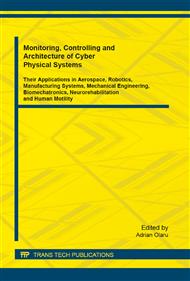[1]
Eagar, M. A., G. D. Luke, and L.W. Stocham, Ignition Transient Modeling for the Space Shuttle Advanced Solid Rocket Motor, 27th AIAA, SAE, ASME & ASEE Joint Propulsion Conference and Exhibit, Monterey, CA, June 28-30, (1993).
DOI: 10.2514/6.1993-2062
Google Scholar
[2]
Foster, W. A., R. M. Jenkins, Al. Ciucci, and S. D. Johnson, Development of a New Generation Solid Rocket Motor Ignition Computer Code, Final Report, NASA-CR-19573A, February (1994).
Google Scholar
[3]
** Encyclopedia Britanica, http: /www. britannica. com/EBchecked/topic/50680/ballistite, accessed on August 1, (2014).
Google Scholar
[4]
Fant, Kenne, Alfred Nobel, a Bibliography, trasl. Marianne Ruuth, ISBN 1559703288, 9781559703284, Arcade Publishing, page 232, (2006).
Google Scholar
[5]
Schultz, Frederich E., Reignitable solid rocket motor, US Patent US3065598A, (1962).
Google Scholar
[6]
Kaplan, Charles J., Solid propellant rocket motor, US Patent US3286471A, (1966).
Google Scholar
[7]
Eric L. Petersen, Sudipta Seal, Matthew Stephens, David L. Reid, Rodolphe Carro, Thomas Sammet, Alex Lepage, Extinguishable Solid Rocket Propellant Rocket Motor, US Patent US8336287B1, (2012).
Google Scholar
[8]
Johnston, W. A., Solid Rocket Motor Internal Flow during Ignition, J. Propulsion Power, 11, 3(1995).
DOI: 10.2514/3.23869
Google Scholar
[9]
Rugescu, R. D., Modeling of One-dimensional Unsteady Flows in Rocket Engines, Rev. Roum. Sci. Tech. -Mech. Appl., (1999).
Google Scholar
[10]
Rugescu, R. D., Maximizing Chemical Information from Laboratory Statistics, Revista de Chimie, ISSN, 0034-7752, CODEN, RCBUAU, Publisher Chiminform Data S.A., Romania, 58, 6(2007), pp.579-581, (2007).
Google Scholar
[11]
Rugescu, R. D., Unexpected High Temperature Chemical Freezing during Slow Isochoric Cooling, Plenary presentation, Proceedings of the 10th WSEAS Int. Conf. on Mathematical and Computational Methods in Science and Engineering MACMESE'08 Bucharest, ISBN 978-960-474-019-2, ISSN 1790-2769, 07-09 November, pp.358-363, (2008).
Google Scholar
[12]
Rugescu, R. D., C. Predoiu, C. Nae, R. F. Bacaran, V. M. Pricop, Isochoric low speed processes within calorimeters show unexpected chemical freezing, International Aerospace Sciences Conference AEROSPATIAL 2008, ISBN: 978-973-0-05704-1, 1-2 Oct., Bucharest, pp.331-339, (2008).
Google Scholar
[13]
Barrere, M., André L Jaumotte, Baudouin Fraeijs de Veubeke, and Jean Vandenkerckhove, Rocket propulsion, Amsterdam, Elsevier Publishing Co., Van Nostrand, 861 pp, (1960).
DOI: 10.1017/s036839310007396x
Google Scholar
[14]
** Internal Aerodynamics in Solid Rocket Propulsion, RTO/NATO, (2004).
Google Scholar
[15]
Allen, Andrew, Michael Anderson, and Bruce Mattson, The remarkable chemistry of potassium dioxide-KO2, JCE 2008-0703, http: /mattson. creighton. edu/KO2/KO2. pdf, Creighton University, Omaha, Nebraska, (2008).
Google Scholar
[16]
Breslyn, W., Potassium atom configuration, https: /www. youtube. com/watch?v=LREo3zdLj88, accessed August 1, (2014).
Google Scholar
[17]
Cotton, F. A.; Wilkinson, G., Murillo, C. A.; Bochmann, M., Advanced Inorganic Chemistry, 6th Edition, ISBN 978-0-471-19957-1, John Wiley & Sons, Inc., 1376 pages, page 98, (1999).
DOI: 10.1002/(sici)1099-0739(200003)14:3<172::aid-aoc935>3.0.co;2-8
Google Scholar
[18]
Guta, C., and R. D. Rugescu, Study and Research on the Optimization of Homogeneous and Heterogeneous Solid Propellant Rocket Engines to Produce High Performances, Contract Report no. 133/April 6, 1979, UPB-INCREST, Bucharest, (1979).
Google Scholar


